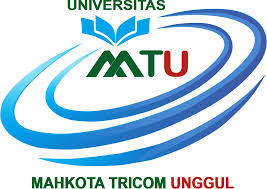A Field Study on Evaluating Mental Workload in “Kerupuk Emping” Small and Medium-Sized Enterprise in Hanau Berak Village, Lampung
DOI:
https://doi.org/10.55927/ijems.v1i2.3890Keywords:
Medium-Sized Enterprises, Mental WorkloadAbstract
This study examined the mental workload of employees in small and medium-sized enterprises (SMEs) engaged in the production of “Kerupuk Emping” in Hanau Berak Village, Lampung. Using both qualitative and quantitative techniques for data collection, a mixed-methods strategy was employed. The NASA-TLX questionnaire was utilized to measure mental burden, including mental demand, physical demand, temporal demand, performance, effort, and frustration. In addition, semi-structured interviews were used to acquire a deeper understanding of the experiences of the participants. The findings revealed that employees of “Kerupuk Emping” small and medium-sized enterprises experienced a substantial mental burden. This study’s findings can inform interventions aimed at reducing mental burden in the workplace, resulting in improved employee health and well-being and increased SME productivity
Downloads
References
Amin, M., & Okou, C. (2020). Casting a shadow: Productivity of formal firms and informality. Review of Development Economics, 24(4), 1610–1630. https://doi.org/10.1111/rode.12697
de Winter, J. C. F. (2014). Controversy in human factors constructs and the explosive use of the NASA-TLX: A measurement perspective. Cognition, Technology and Work, 16(3), 289–297. https://doi.org/10.1007/s10111-014-0275-1
Erdogan, A. I. (2023). Drivers of SME Growth: Quantile Regression Evidence From Developing Countries. SAGE Open, 13(1), 1–15. https://doi.org/10.1177/21582440231163479
Fallahi, M., Motamedzade, M., Heidarimoghadam, R., Soltanian, A. R., Farhadian, M., & Miyake, S. (2016). Analysis of the mental workload of city traffic control operators while monitoring traffic density: A field study. International Journal of Industrial Ergonomics, 54, 170–177. https://doi.org/10.1016/j.ergon.2016.06.005
Hanim, L., Soponyono, E., & Maryanto, M. (2022). Pengembangan UMKM digital di masa pandemi Covid-19. Prosiding Seminar Nasional Penelitian Dan Pengabdian Kepada Masyarakat, 2(1), 30–39. https://doi.org/10.24967/psn.v2i1.1452
Hart, S. G., & Staveland, L. E. (1988). Development of Nasa Tlx (Task Load Index): Results of Empirical and Theoretical Research. Human Mental Workload. Human Mental Workload, 139–183.
Idkham, M., Dhafir, M., Safrizal, & Aulia, M. R. (2022). Workload analysis during operation coconut coir peeler operation. IOP Conference Series: Earth and Environmental Science, 1116(1). https://doi.org/10.1088/1755-1315/1116/1/012035
Longo, L., Wickens, C. D., Hancock, P. A., & Hancock, G. M. (2022). Human Mental Workload: A Survey and a Novel Inclusive Definition. In Frontiers in Psychology. https://doi.org/10.3389/fpsyg.2022.883321
Mohammadian, M., Parsaei, H., Mokarami, H., & Kazemi, R. (2022). Cognitive demands and mental workload: A filed study of the mining control room operators. Heliyon, 8(2), e08860. https://doi.org/10.1016/j.heliyon.2022.e08860
Nikulin, C., Lopez, G., Piñonez, E., Gonzalez, L., & Zapata, P. (2019). NASA-TLX for predictability and measurability of instructional design models: case study in design methods. Educational Technology Research and Development, 67(2), 467–493. https://doi.org/10.1007/s11423-019-09657-4
Nur, I., Iskandar, H., & Ade, R. F. (2020). The measurement of nurses’ mental workload using NASA-TLX method (a case study). Malaysian Journal of Public Health Medicine, 20(Specialissue1), 60–63. https://doi.org/10.37268/MJPHM/VOL.20/NO.SPECIAL1/ART.705
Nurmasari, E., Ushada, M., & Suwondo, E. (2018). Analysis of the influence of physical and mental workload on worker productivity in bakery SME. Digital Press Life Sciences, 1, 00004. https://doi.org/10.29037/digitalpress.21248
Parida, P. C., Mitra, A., & Pradhan, K. C. (2021). The missing middle phenomenon in Indian manufacturing sector: myths or realities? Journal of Economics and Development, 23(3), 317–331. https://doi.org/10.1108/jed-09-2020-0120
Pradhana, C. A., & Suliantoro, H. (2018). Analisis beban kerja mental menggunakan Metode NASA-TLX pada bagian shipping perlengkapan di PT. Triangle Motorindo. Industrial Engineering Online Journal, 7(3), 1–9.
Santiana, I. M. A., Lokantara, W. D., Yusuf, M., & Sutapa, I. N. (2018). Workload analysis of rice field workers in Bali. 1(Icst), 504–507. https://doi.org/10.2991/icst-18.2018.105
Sarfiah, S., Atmaja, H., & Verawati, D. (2019). UMKM sebagai pilar membangun ekonomi bangsa. Jurnal REP (Riset Ekonomi Pembangunan), 4(2), 1–189. https://doi.org/10.31002/rep.v4i2.1952
Shan, Y., Shang, J., Yan, Y., & Ye, X. (2023). Workflow interruption and nurses’ mental workload in electronic health record tasks: An observational study. BMC Nursing, 22(1), 1–14. https://doi.org/10.1186/s12912-023-01209-9
Tao, D., Tan, H., Wang, H., Zhang, X., Qu, X., & Zhang, T. (2019). A systematic review of physiological measures of mental workload. International Journal of Environmental Research and Public Health, 16(15), 1–23. https://doi.org/10.3390/ijerph16152716
Wang, L., He, X., & Chen, Y. (2016). Quantitative relationship model between workload and time pressure under different flight operation tasks. International Journal of Industrial Ergonomics, 54, 93–102. https://doi.org/10.1016/j.ergon.2016.05.008
Downloads
Published
How to Cite
Issue
Section
License
Copyright (c) 2023 Muhammad Attar, Indah Puspita Sari, Suryaneta

This work is licensed under a Creative Commons Attribution 4.0 International License.








